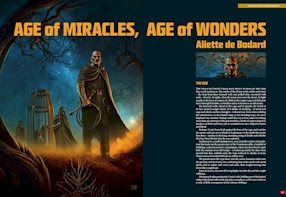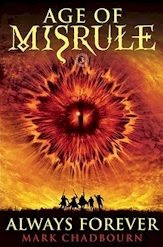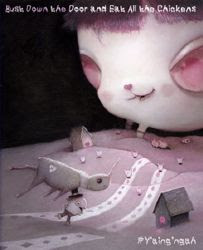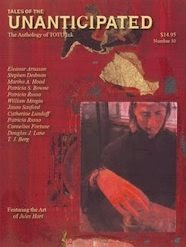A grassroots effort to turn the Dramatic Presentation, Short Form category into "Best Doctor Who Episode" was thwarted by the fact that only three
Doctor Who episodes were released last year. I'm not sure it was necessary to nominate all three, but at least they are good examples of the form, and the two non-Doctor nominees are strong enough to make this a solid list overall.
Let's dispose of the Doctor first. To my tastes the best of the three nominated episodes is "
The Waters of Mars," in which the Doctor encounters a body-snatching alien life form. Its appearance comes at a critical moment in history, and for once the Doctor is convinced he should not interfere. His frustration at being unable to help lends an effective "
Cold Equations" feel to the episode, and it is appropriate that the action he finally takes does not turn out as intended.
"
The Next Doctor" is also a strong episode. The identity of the "next doctor" makes a nice mystery, although Russell Davies made the right choice in not waiting until the end of the show to reveal the answer. The episode has some strong dramatic moments, despite a disjointed story and the actors hamming it up in typical
Who fashion. The King of the Cybermen strolling through 1850's London is an effective ending image, but then
Doctor Who was doing steampunk long before it was cool.
Less successful is "
Planet of the Dead," which features a nonsensical plot, beginning with perhaps the most egregious example yet of the Doctor just happening to be there when bizarre stuff happens——naturally, he'll be riding the one bus in the history of London to be pulled through a wormhole——and ending with no explanation of why this swarm of nasty critters should open a wormhole to attack Earth but then wait exactly as long as the Doctor required before trying to zip through the hole. Meanwhile, the interaction between the Doctor and wannabe companion Lady de Souza feels forced.
"
No More Good Days," the premier episode of
FlashForward, combines an interesting premise (thanks to Robert Saywer) with good acting and nice effects. David Goyer's direction is intrusive at times, for example circling the camera around conversing characters until the viewer's head swims, but by the end he managed to build up the tension nicely. This was a solid opener to the series, but we have learned recently that Hollywood TV introduces SF plotlines far better than it resolves them.
By far my favorite of the nominees is "
Epitaph One," the made-for-DVD final episode of Season One of
Dollhouse. I watched
Dollhouse from the outset, and like many viewers I felt the show got off to a slow start and was borderline offensive in its easy acceptance of the deeply immoral technology involved, which it treated initially as just a fun way to produce great prostitutes. Thankfully, by the end of Season One Joss Whedon made it clear that the main storyline would be Echo's struggle to retain her identity and defeat the evil minds behind the Dollhouse. "
Epitaph One" showed us how much is at stake, with a glimpse of a future where Dollhouse technology has destroyed civilization. I found the episode gripping in itself, and also a huge step forward for the show, although the second season did not quite deliver on that promise.
Incidentally, because the character of Echo is offstage through nearly all of "
Epitaph One," Eliza Dushku's detractors may vote for it with a clear conscience. I'm actually of the minority view that Dushku's acting was a strength of
Dollhouse. She was not entirely convincing in all of the different roles Echo assumed, but then it was important to the show that she
not be entirely convincing. However Echo was imprinted, we needed to see flashes of the same core personality, a core personality that was confused and uncertain. Perhaps this is a case like William Shatner in the original
Star Trek, where an actor's flaws are happily well-suited to the character (I haven't seen enough of Dushku's work to say), but I thought she pulled that off perfectly.
"
Epitaph One" was the strongest episode of a show that, despite its flaws, was the best SF on television in 2009.
Aaron's Ballot for Best Dramatic Presentation, Short Form1. Dollhouse, "Epitaph One"
2. Doctor Who, "The Waters of Mars"
3. FlashForward, "No More Good Days"
4. Doctor Who, "The Next Doctor"
5. Doctor Who, "Planet of the Dead"




















